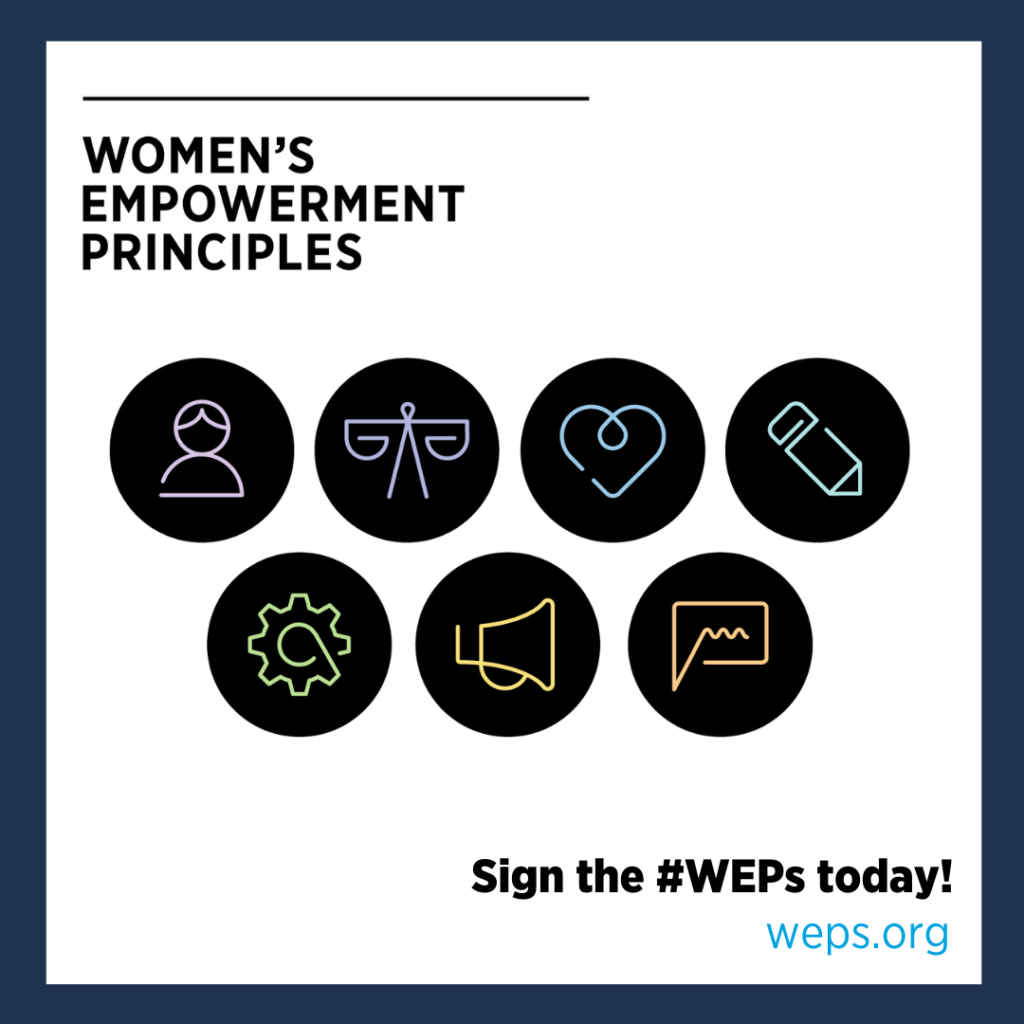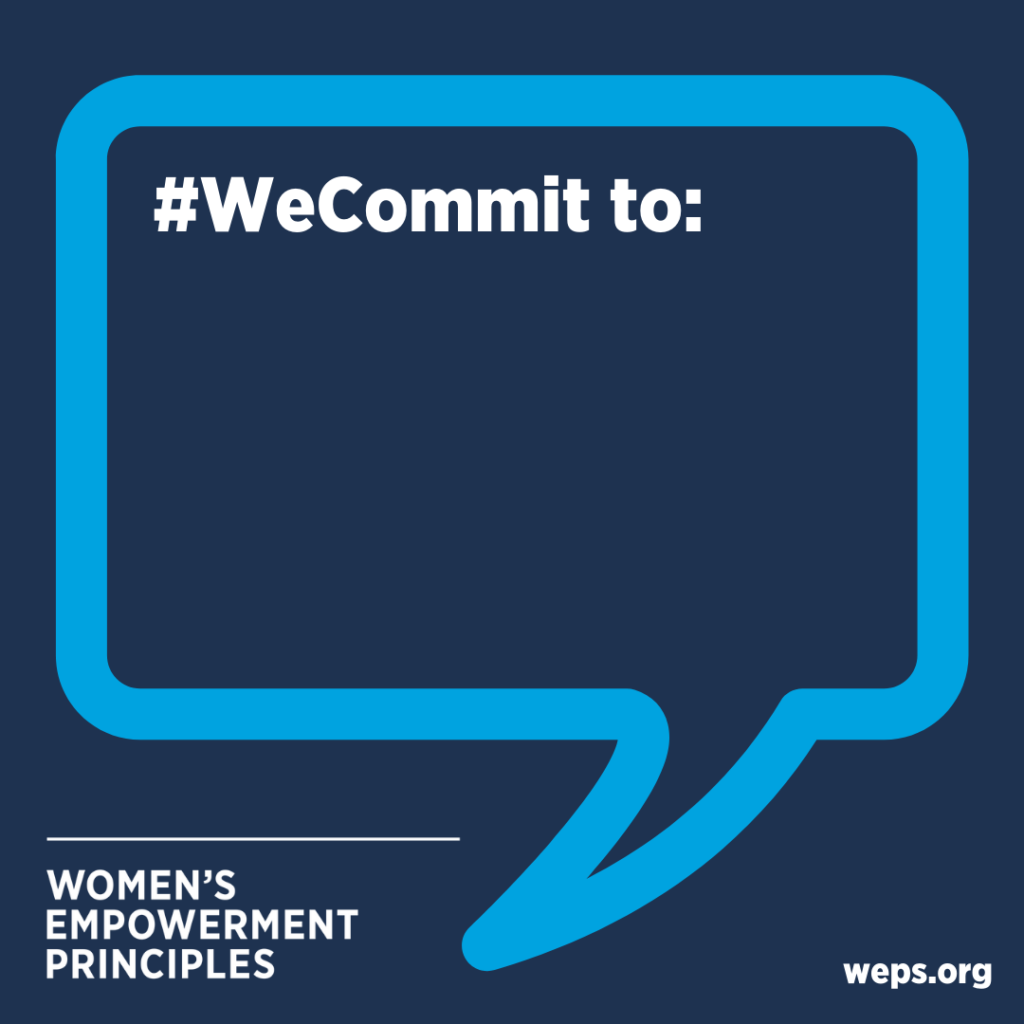There are many initiatives, campaigns and efforts being realized to decresase the gender gap in different fields. A few weeks ago we got in contact with a dedicated team at UN Women working on Women’s Empowerment Principles (WEPs). Interested in learning more, we sent Borut (ALL DIGITAL) to do some research. Enjoy reading about his findings.
Ms Neisingh, you are Consultant: Senior Expert on Women’s Economic Empowerment in the EU, at UN Women. How would you plainly explain what you do?
UN Women appointed me to work on awareness-raising of the Women’s Empowerment Principles (WEPs) in the European Union and European context. WEPs are a set of principles that UN Women and UN Global Compact developed to offer guidance to businesses on promoting gender equality and women’s empowerment in the workplace, marketplace and community and how to incorporate women’s empowerment in the DNA, or business models, of the companies.
Your work revolves around Women’s Empowerment Principles. You briefly mentioned that they offer guidance to businesses on promoting gender equality and women’s empowerment. Would you please tell us more about Women’s Empowerment Principles?
Women Empowerment Principles are based on international human rights and labour standards and define seven principles to advance gender equality. These are:
- Principle 1: High-level Corporate Leadership
- Principle 2: Treat all Women and Men Fairly at Work without Discrimination
- Principle 3: Employee Health, Well-Being and Safety
- Principle 4: Education and training for career advancement
- Principle 5: Enterprise development, supply chain and marketing practices
- Principle 6: Community initiatives and advocacy Measurement and Reporting
- Principle 7: Measurement and Reporting
Principle 1 focuses on leadership and represents a key and integral part of making gender equality and women’s empowerment a top strategic priority. Other principles are based on three pillars. Principles 2, 3 and 4 focus on the workplace within your company, while Principles 5 and 6 are more externally focused (on the marketplace and the community). For example, they recommend how a company should deal with their suppliers to promote women’s empowerment or remove gender stereotypes in advertising and marketing. The seventh principle is about transparency and reporting about company goals and progress.

Last year [2020] marked the 10th anniversary of WEPs. What has been the impact of the WEPs initiative on gender equality dimensions of the 2030 agenda and the United Nations Sustainable Development Goals (SDGs)? How satisfied are you at UN Women with the impact achieved?
The WEPs were established to call on the private sector to advance gender equality and women’s empowerment. In general, a crucial part of the SDGs implementation is that we need everybody on board. Every person, every CEO, every prime minister, we need all of them to work and continue progress on gender equality and the SDGs related to it, and we need to do that on a global scale.
So far, more than 5,000 companies across 141 countries have signed the WEPs, which is good, but our ambitions are higher than that. As explained earlier, we want to have more companies sign and show their commitment because to realise this goal [SDG 5], we need to stand on each other’s shoulders. We can’t do this alone or with a few stakeholders aboard, but we need everyone’s contributions.
A company would like to support the Women’s Empowerment Principles initiative. How can they do that, and what happens after?

Joining the WEPs network is straightforward. But before explaining the process, I would like to explain that adopting the WEPs is a continuous journey of six main steps. The Journey guides WEPs signatories through: (1) gathering internal support for signing the WEPs (Consider), (2) collecting information required for a signature (Sign) and showing the company commitment to gender equality on the company profile page activating internal stakeholders with the help of industry-specific practices and recommendations (Activate), (4) engaging external stakeholders and business partners through the value chain (Engage), (5) gathering data against the WEPs Transparency and Accountability Framework (Sustain), and (6) reporting on eight key performance indicators on their WEPs company profile pages (Report). More information about the WEPs Journey can be found in the WEPs Brochure.
Back to practicalities. If you want to join the WEPs network, you need first to consult within your organization to find support for this action. When you do, the next step is to commit to the principles. You do this by having the founder or the CEO sign the CEO Statement of Support (currently available in 12 languages) and submit it with the application. If you choose to, you can publicly showcase your commitment. The positive effect of showcasing is that your network will help you keep you accountable for committing.
Then you want to incorporate the WEPs into your company’s DNA or business model. There are no formal requirements for doing it or how far you go. There is also no particular time frame. We [UN Women] encourage all signatories to make significant efforts to advance gender equality in your workplace, in the market and in the community.
That is straightforward indeed. What if a company does not have the knowledge and experience to implement the next steps. Can they get some support with the knowledge building and competence development to get on track?
Yes, you can. The WEPs toolkit can help you with that. UN Women has such an excellent knowledge on this topic. For example, you can find different thematic pieces topics like sexual harassment, family friendly policy, healthcare, women on company boards, gender-inclusive procurement and more.
Together with the European Union, we developed WEPs Learn. This learning hub strives to equip women with new skills, capacities, and characteristics to succeed in the workplace. This virtual platform also offers learning opportunities for WEPs signatories to deepen their Women’s Empowerment Principles implementation. The lessons are designed to give women more confidence in job interviews, lead gender equality initiatives within their organisations, the ability to assess new job opportunities, and therefore grow their careers more effectively.
We also developed a tool called WEPs Gender Gap Analysis Tool (WEPs Tool). It helps companies identify strengths, gaps, and opportunities to improve their performance on gender equality. The tool is a free, user-friendly, and strictly confidential self-assessment tool that helps companies to assess current policies and programmes, highlight areas for improvement and identify opportunities to set future corporate goals and targets. Results are provided in a concise and clear format so companies can easily identify areas for improvement.
What is your message to the small and medium businesses that often lack time and resources to engage in activities and topics outside their core businesses and maybe doubt they can make an impact?
I think every company has an impact. Even if you are self-employed, you influence your surroundings, your community, your suppliers – you buy something, you work with somebody. You can always use the Principles – if you sign them and ask other companies you are working with to sign them too, you can have influence. WEPs were not designed only for big companies and multinationals. A lot of small companies that signed up and joined the WEPs network prove that. Sometimes it is also easier for them to decide on such a commitment because you don’t have to go through many layers like in large organizations. More and more smaller teams are also aware that diversity is important, and women empowerment is undoubtedly essential for their business.
What we also see is that some sectors show courageous commitment. Some technical sectors and financial sector have a lot of companies sign up because they also want to show their willingness to be open for women to work there, that they can have equal career opportunities, that they won’t be discriminated against, that it’s an open environment for them to work there.
Signing WEPs can be good for your business because gender equality and diversity are just better for your business and better decision making for better satisfaction of your employers and their retention. It’s a win-win situation.
